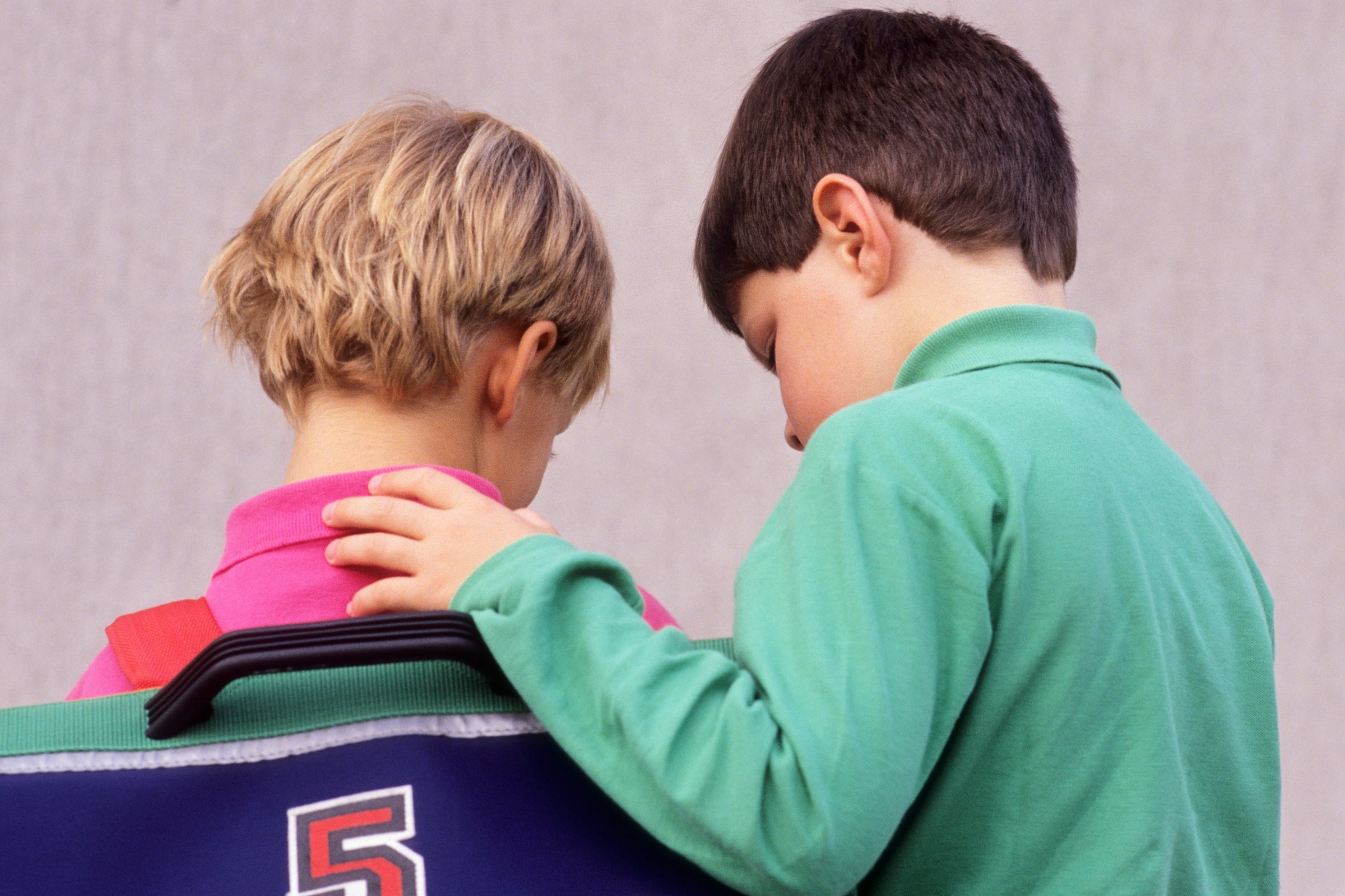
Nobody wants their kid to get mixed up with the wrong people. But even good kids face big challenges and tough choices in life. And often, the first people they turn to are other kids.
That means our kids may be weighed down by the situations their friends are in—and not sure how to help.
So how can parents start good conversations with kids about what do when they see their friends struggling?
Like most adults, says Michele Borba, an educational psychologist and author of Unselfie: Why Empathetic Kids Succeed in an All About Me World, most kids are likely to be bystanders rather than helpers when they see someone in trouble. And “the No. 1 reason is not because they don’t care, but because they don’t know what to do,” says Borba. “We’ve focused so much on helping kids be good workers that we’re not helping them be good helpers.”
At the elementary age, Borba says, parents can help kids build empathy by changing the script. Instead of asking, “What did you do today?” Borba says, try asking “Who did you help?” Parents can also be on the lookout for moments when kids have tuned into someone in need, and encourage them to think about what they’re seeing, with questions like, “How would you feel if that were you? What do you think that you can do?”
Middle school kids are incredibly sensitive to the opinions of others, which is why bullying and peer pressure are so prevalent at this age, says Borba. So a big concern for middle schoolers is how to stick up for a friend. In the moment, Borba says, kids don’t always think quickly enough to intervene. But if parents hear about peer pressure or bullying, they can encourage kids to reach out to their friends, even after the fact, to let them know they’re not alone. And encourage kids to help their friends reach out to a trusted authority. One question all parents should ask their kids at this age, according to Borba: “If there’s a problem, who would you go to?”
By high school, the stakes can be high. “We’ve never seen such high rates of stress and teen suicide,” Borba says. And according to her, “the best safety net is kids helping kids.” But in order to help, kids need specific direction. Parents should continue to make sure kids know how to connect with caring counselors and resources in the community, and be willing to talk through the situations of individual friends as they come up. Borba suggests setting up a distress code, known only to kids and parents, so that kids can reach out to parents for help even in the midst of a high-pressure social situation. Kids could text the code to their parents or say certain words over the phone, which would indicate parents should drop everything and come and get them.
And, she says, parents should keep an eye out for the ways that caring for their friends affects kids—asking kids how they feel, and how they’re doing, as they walk through tough seasons with their friends.
More Must-Reads from TIME
- Why Trump’s Message Worked on Latino Men
- What Trump’s Win Could Mean for Housing
- The 100 Must-Read Books of 2024
- Sleep Doctors Share the 1 Tip That’s Changed Their Lives
- Column: Let’s Bring Back Romance
- What It’s Like to Have Long COVID As a Kid
- FX’s Say Nothing Is the Must-Watch Political Thriller of 2024
- Merle Bombardieri Is Helping People Make the Baby Decision
Contact us at letters@time.com